#mirkarimi
Text
Mirkarimi’s “The Night Guardian” to represent Iran at Oscars
September 20, 2023 - 19:16

TEHRAN – “The Night Guardian” by Reza Mirkarimi has been selected as Iran’s submission to the forthcoming 96th Academy Awards in the best foreign-language film category.
A committee of nine film experts was assigned by Iran’s Farabi Cinema Foundation to choose the county’s submission to the Oscars race.
On Tuesday, the committee selected "The Night Guardian" from a shortlist of three films, the others being "Conjugal Visit" directed by Omid Shams and "The Town" by Ali Hazrati.
Initially, the committee had narrowed down 42 eligible Iranian films to 15, before ultimately deciding on the final three.
Mirkarimi's film, which debuted at the Fajr Film Festival last year, garnered nine award nominations and ultimately won the best director category.
Co-written by Mirkarimi and Mohammad Davoud, "The Night Guardian" follows the story of an innocent village boy whose carefree life is disrupted by his trust in a construction engineer.
After leaving his village due to drought, Rasoul is relieved to find employment as a night guardian at a construction site. However, he soon discovers that something sinister is happening at the seemingly deserted location. As he becomes ensnared in the peculiar circumstances surrounding him, Rasoul finds himself trapped and in danger.
Since 1994, Iran has been a regular participant in the Oscars film category, with two wins under its belt for "A Separation" and "The Salesman," both directed by Asghar Farhadi. Two of Mirkarimi's films have previously been selected to represent the country: "So Close, So Far" in 2005 and "Today" in 2014.
On December 21, a shortlist of 15 films will be disclosed. The final nominations will then be announced on January 23, 2024, leading up to the 96th Academy Awards ceremony in Los Angeles, California, on March 10, 2024.
Photo: A scene form Iranian movie “The Night Guardian” by Reza Mirkarimi
SAB/
#The Night Guardian#Reza Mirkarimi#Oscars#96th Academy Awards#best foreign-language film#Iran#Farabi Cinema Foundation#Mohammad Davoud
0 notes
Text
0 notes
Text
0 notes
Photo





قلعه رویاها [Castle of Dreams] (Reza Mirkarimi - 2019)
#قلعه رویاها#Castle of Dreams#Reza Mirkarimi#Ghasr-e Shirin#Cinema of Persia#Hamed Behdad#Zhila Shahi#drama film#Azadeh Nobahari#Niousha Alipour#Yuna Tadayyon#Iran#Iranian film directors#father and sons#Iranian society#family#Iranian New Wave#Iranian cinema#iranian movies#childhood#road movie#fatherhood#neorealism#Rezā Mīrkarīmī#crying
52 notes
·
View notes
Photo

küp şeker
ye habe ghand | reza mirkarimi
7 notes
·
View notes
Text

So Close So Far (Reza Mirkarimi, 2005)
0 notes
Text
Through the olive trees
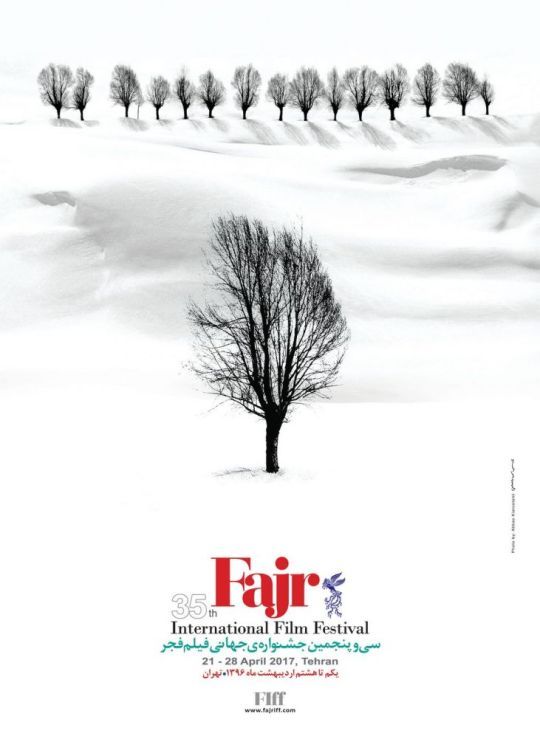
This is not the first time we turn our gaze to the cinema of Iran, yet it is the first time we actually had our own envoy in Tehran – we give you the 35th edition of Fajr International Film Festival as seen and instagrammed by Irina Trocan!
Starting with Abbas Kiarostami’s 1987 WHERE IS THE FRIEND’S HOME? / KHANE-YE DOUST KODJAST? (1987) and leading up to Asghar Farhadi’s THE SALESMAN / FORUSHANDE (2016), Iranian cinema has enjoyed great visibility abroad. Since there are strong similarities between many of these films, it even comes across as a unitary style, a national school, with Kiarostami as a mentor and Jafar Panahi as one of the most prominent representatives working today. These films are dramaturgically subtle (and supple), intended to give a sense of the bigger picture of Iranian society, as well as custom, self-reflexive, and with obvious framing devices (observing adult behavior from a child’s perspective, driving through the city with different passengers, summing up a marriage in front of a judge – to refer to just a few high-profile Iranian films from the past decades).
However, as it is the case with many new waves and cinemas, the fragment of yearly production that is visible abroad is a small and misleadingly homogenous one, while the view from within the borders of Iran is radically different. Reza Mirkarimi, Director of Fajr International Film Festival, claims that there were 60 Iranian film submissions for this edition of FIFF, while the total number of films made within a year is even higher – reportedly, 90-100 features every year, with over 130 made between March 2016 and March 2017. The overall production (you guessed it) is trying to do many different things beside emulating Kiarostami and Panahi.
But I would like to properly begin by making a specification about the Fajr festival – the source for a potential confusion that took me the first two days of the festival to clear up completely. A couple of months ahead of the international festival, there is the national event where a larger number of Iranian films is being shown, some of which are only programmed during FIFF as market screenings in order not to affect their chances to have an international-festival premiere somewhere else. What is added with FIFF is, well, the “international” bit of the programming, a line-up of recent festival darlings from around the world. According to the festival regulations, the team is on the lookout for films “that seek justice, defend the oppressed and underline humane and moral values.” Since several of the titles in the selection are by now well-known, I believe it is useful to give an overall impression: Cristian Mungiu’s GRADUATION / BACALAUREAT (2016), Agnieszka Holland's SPOOR / POKOT (2017), Andrzej Wajda's AFTERIMAGE / POWIDOKI (2016), the Dardenne brothers' THE UNKNOWN GIRL / LA FILLE INCONNUE (2016), François Ozon's FRANTZ (2016). The listed films are all tempered social critiques, with most of them taking no sides, although I will say that SPOOR is – due to its ending, which I will not spoil – radically ecologist.
Some of the international films might have worked well as double bills, especially Kim Ki-duk’s THE NET / GEUMUL (2016) and Bulgarian filmmakers Kristina Grozeva & Petar Valchanov’s GLORY / SLAVA (2016). The former – appropriately named for its tightly knit narrative construction – follows a North-Korean fisherman, Nam Chul-woo (Ryoo Seung-bum), whose boat engine malfunctions and, before he knows it, he drifts to the coast of South Korea. Held in awe as the author’s one-off political film, it might after all be about something rather philosophical, like the blight of power and/or the hopelessness of an individual who is unlucky enough to get caught between the wheels of the social machinery. It is hardly more socio-economically precise than, say, Park Chan-wook’s OLDBOY / OLDEUBOI (2003).
In a concrete sense, the fisherman suffers from the strictness of the South Korean intelligence service – he is suspected of being a spy until he is proven innocent and falls into the hands of an agent who does not shy away from using torture to get confessions. Back in North Korea, after having endured a lot, the protagonist is suspected of having been seduced by capitalism with his brief glimpse of a better life, and this time he is a suspect to his own government. Bottom line is: do not get on the wrong side of people who can ruin your life in the name of higher order. Although the protagonist is a larger-than-life honest citizen (and would hardly be believable were it not for the actor’s restrained ferocity in facing his oppressors), several allegorical scenes in the film are pretty effective: Nam Chul-woo is left alone on a Seoul street and desperately tries to keep his eyes closed, to resist taking in images of capitalism and a different way of life than the one he made for himself. The souvenir he takes home from South Korea is so innocent that it only becomes ridiculous when authorities of his homeland classify it as “evidence.” In short, Kim Ki-duk convincingly constructs a negative world view, and there is definitely a lot of craft to how the misery keeps on coming, but it helps to be a pessimist from the start to get on his wavelength.
In GLORY, a stuttered railway worker finds a pile of money on the train tracks and decides to hand it over to the authorities, and his honesty similarly does him in. Before he knows it, he is stuck between, on one side, the Ministry of Transport (they hold a public ceremony in his praise but otherwise neglect to pay him the previous months’ salaries and “award” him by giving him a watch while losing the better one he had already) and, on the other side, the press. The protagonist finds sympathy with a journalist for the way he has been mistreated by the Ministry, but is soon abandoned again and further abused by the Ministry for being a snitch. Again, the story, inspired by actual events and co-authored with screenwriter Decho Taralezhkov, strikes a chord for viewers who are cynical about social order in Eastern Europe – a temptation that is truly hard to resist, especially with the majority of us who work for neither the government, nor the press, and are forced to passively observe as everything goes awry. There are several fine touches in GLORY – for example, Stefan Denolyubov handles his character’s speech impediment as just one element of his life-long aloofness. He never thought to claim his rights before, and when he finally dared to do it, he discovered he does not have the necessary skills. The ceremony in his honor makes for a well-scripted scene: it is mostly a PR show of Ministry insiders, directing an extra to make the Minister look good on stage.
Since I had heard of what Iranian films are not allowed to show (kisses, nudity, women’s uncovered heads, physical contact between male and female performers who are not married in real life) I must admit I was curious as to how these restrictions applied to foreign films, since they did not need to respect them from script development onwards. By themselves, THE NET and GLORY, which I had not seen before FIFF, gave me an introduction to what censorship looked like. A woman wearing (what seemed to be) a sexy red dress in THE NET had her silhouette completely blurred out. Another woman, this time in GLORY, quietly sitting in the background and showing somewhat of a cleavage, had an extra patch of blurred pixels added on top of her blouse. Naked women’s legs (but not men’s legs!) were also hidden. To me, paradoxically, these edits rather had the effect of drawing attention to details that would not have seemed erotic in an unmodified shot. Festival films are less regulated to conform with morality than those aimed at a larger audience, and earnestness could not have been unflinchingly observed as the programmers selected Werner Herzog’s SALT AND FIRE (2016), but it seems to still be hard to find films that do not need edits.
The most moving film I have seen was Rithy Panh’s EXILE / EXIL (2016), which continues the endeavor of his THE MISSING PICTURE / L'IMAGE MANQUANTE (2013) of retelling recent history, for which no official image archive exists. A poetic reenactment of human suffering in late 1970s Cambodia (then known as Democratic Kampuchea), it takes place entirely inside a hut (or, more precisely, a theatrical set resembling it) and has a sole character – a nameless, quiet young male, whom one might suspect of being the filmmaker’s alter ego. The space is versatile enough to gain cosmic dimensions – a cardboard cut-out of the moon and a flock of menacing seagulls appear on occasion, hovering over the protagonist’s head, the floor magically morphs into a field or a patch of grass.
One scene is a leveled-surface reenactment of a Sisyphean task: as the man rolls a boulder from one wall of the room to the other, another boulder appears (through a cross-fade) where the first one had been. There are biographical allusions in the film, including a picture of a woman we assume to be Rithy Panh’s mother – but it all builds up to an essay film of life in poverty and isolation rather than anything more narratively precise. Close-ups of the protagonist eating an insect, or a chicken that does not come in ready-made crispy nuggets, remind viewers that basic survival is historically not a timeless, universal human right. The soundtrack is made up on meditations on exile that are no less devastating for being abstract – from thinkers and artists (Karl Marx, René Clair) to political leaders (Ho Chi Minh) – and their rapport to the image is always loose, engaging spectators in a poetic guessing-game.
Turning to even more recent history, Fajr IFF had a section of (mostly Iranian) films and documentaries, grouped in the section Broken Olive Trees. Among them was THE DARK WIND / REŞEBA (2016), an Iraqi-German-Qatari coproduction, directed by Hussein Hassan, about a Yazidi woman who escapes after being captured by the Islamic State but upon returning to Kurdistan is rejected by the family of her fiancé for losing her honor. Majed Neisi’s THE BLACK FLAG / PARCHAM E SIAAH (2015) documents the frontline of an Iraqi offensive against ISIS. I have unfortunately missed them due to conflicting scheduling, but I am still hoping to catch up with them somewhere else – they have been previously screened in the Stockholm International Film Festival and Busan, and Visions du Réel, respectively.
Going back full-circle to the Iranian films, let me state again that I was surprised by the diversity of their influences, though I would not necessarily say that all of them bring the influences to a cohesive whole. Fereydoun Jayrani's ASPHYXIA / KHAFEGI (2017) is a bleak film about a nun which might have gotten tricks on how to light somber interiors from Paweł Pawlikowski's IDA (2013). The nun, also facing dilemmas about her future, takes care of a sick woman gone mute who seems to be repressing something about her marriage, so there is a hint of Bergman's PERSONA (1966) in it, too, or is it George Cukor's GASLIGHT (1944)? Sadly, the narrative seems to switch to something else every time a certain element becomes interesting. Rambod Javan’s NEGAR (2017) entangles an investigation, fast-paced chases, the main female character’s rich-girl fascination, and several where-did-this-come-from dream sequences is frustrating in a similar way.
The purest genre film I saw (admittedly missing many, including the top-prize winner, Asghar Yousefinejad's 2017 directorial debut THE HOME / EV) is Alireza Davoodnejad’s FERRARI (2017) – it is mostly a city-traffic road movie featuring a girl whose interests are definitely less than spiritual (jewelry and expensive things in general, plus the eponymous rarity on wheels) and a driver who sees her defencelessly wandering around and has the chivalry to help. Moralizing overtones are hard to miss, but both characters are lively and their obstacle course is sufficiently engaging, although the end goal is by anyone’s perspective rather frivolous (the girl wants to find the Ferrari and take a photo with it to spite a friend), there is enough going on to maintain the suspense.
Certainly, there is a lot more to discover than I could have possibly absorbed in a week – especially since, being in Tehran, it was hard to resist the temptation to wander away from the cinema. Despite the Abbas Kiarostami poster exhibition, commissioned by the festival in his memory and lining the hallway of the Charsou cinema, a large part of recent Iranian production was less familiar than I had expected. I left the festival with the commitment to watch out for films that might otherwise fly under my radar – aside from the promise to fly back to Iran to visit Shiraz, and the Instagram handles of several of the Iranians I have met.
#Fajr IFF#FIFF35#Stockholm IFF#Busan IFF#Visions du Réel#Iranian cinema#Abbas Kiarostami#Reza Mirkarimi#Kim Ki-duk#The Net#Kristina Grozeva#Petar Valchanov#Glory#Stefan Denolyubov#Rithy Panh#Exile#Hussein Hassan#The Dark Wind#Majed Neisi#The Black Flag#Fereydoun Jayrani#Asphyxia#Rambod Javan#Negar#Asghar Yousefinejad#The Home#Alireza Davoodnejad#Ferrari#festival report#Irina Trocan
2 notes
·
View notes
Video
youtube
Daryā-e Nūr | Sea of light | Heritage Bridal Banarasi Couture by Warp 'n Weft in Bespoke Handloom Weaves.
From Mughal treasury to Iranian imperial jewels, the Pink Diamond stirs the heart, inspires the imagination and brings alive the utopia of the heritage land where we might have lost some and won some.
The lost battles to invading armies blossomed with idyllic love stories and heroes of romance beyond cultural boundaries. Poetry and literature in assimilating scripts, art and artistry that permeated continents metamorphosed to add to the magnificence and cultural expanse of Indian and Ottoman empires.
Darya-e-Nur invokes the nostalgia of empires of antiquity.
Warp ‘n Weft Bridal Banarasi 2021, is a narrative of slow luxury, artisanal beauty, extraordinary craftsmanship bejewelled with the mysticism of Khinkhwab, a Dream in Banarasi.
A provenance we create, a heritance they weave.
#Banārasipanā
Fashion Film & Music by Warp 'n Weft
Music Track Ae Ri Sakhi
Poetry Hazrat Amir Khusrow
Vocals Gaurika Rai & Dr Prakash Sontakke
Composed, Orchestrated & Arranged Dr Prakash Sontakke
Mixing & Mastering Vijay Audios
Arabic Percussion Aniket Ashok
Indian Percussion & Tabla Karthik Bhat
Iranian Dotar Nader Mirkarimi from Tehran
Shehnai Bhajantari Manjunath
Santoor Sridhar H
©️2021 Warp ‘n Weft. All rights reserved.
Talent Virkenn Raiena | Swapnil Jollie | Bhumika Bansal | Bhavaya Chawla | Mir Tawseef | Abhishek P Chatterjee | Kriti Bhardwaj | Harsh Jani & Dinesh Choudhary | Richard Joseph | Team Warp 'n Weft
0 notes
Photo

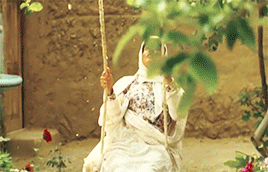
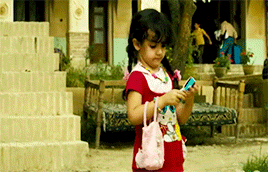


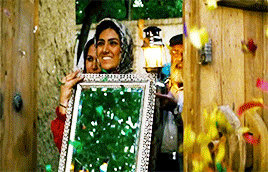
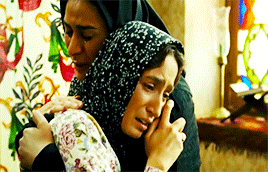
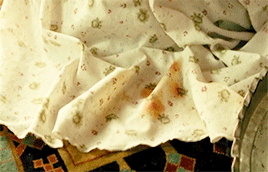
Every movie seen in 2018; 4/?
A Cube of Sugar, 2011 (dir. Reza Mirkarimi)
Don’t come back home from the cemetery early, when I die. Stay by my grave for a few hours.
20 notes
·
View notes
Text
L'Iran envoie le film Le gardien de nuit aux Oscars
Par Constance Jamet et AFP agence
Publié le 20/09/2023 à 15:11
Le cinéaste Reza Mirkarimi exploite ses thèmes de prédilection liés à la religion et aux traditions.
C’était, avec neuf nominations et le prix du meilleur réalisateur, le film phare du Fajr Film Festival qui célèbre chaque année le septième art persan à Téhéran. Le drame Le gardien de nuit du réalisateur Reza Mirkarimi a été sélectionné pour représenter l'Iran aux Oscars, dont la 96e édition se déroulera, le 10 mars 2024.
Après avoir examiné 42 œuvres éligibles, présélectionné 15 d’entre elles pour resserrer le choix à trois longs-métrages, le comité de sélection de la fondation Farabi «a choisi le film Negahban-é Shab (Le Gardien de nuit) comme représentant du cinéma iranien», a annoncé cet organisme qui dépend du ministère de la Culture de la République islamique.
Sorti en 2022, ce long métrage raconte l'histoire de Rassoul, un ouvrier villageois qui doit choisir entre ses valeurs morales et l'argent lorsqu'il vient travailler à Téhéran.
Marcher dans les pas d’Asghar Farhadi
Reza Mirkarimi, 56 ans, exploite dans ses films des thèmes liés à la religion et aux traditions avec une approche humaniste. On lui doit Sous le clair de lune, salué par le Grand Prix de la Semaine de la critique au festival de Cannes en 2001, et de Si proche, si loin, prix du meilleur film au festival Fajr de Téhéran en 2005. C’est la troisième fois que Reza Mirkarimi est choisi par les autorités de son pays pour représenter l’Iran à la grand-messe hollywoodienne.
Pour avoir une chance de décrocher la statuette en mars prochain, il faut désormais que Le Gardien de nuit parvienne à se faire une place sur la liste des 15 films présélectionnés début janvier par le comité des Oscars en charge du prix du meilleur film international. Seulement cinq de ces longs-métrages seront nommés le 23 janvier prochain. Chaque année, c’est près d’une centaine de films étrangers qui sont envoyés à l’Académie américaine du cinéma.
Le cinéma persan a été au palmarès des Oscars à deux reprises. Le célèbre réalisateur iranien Asghar Farhadi a remporté l'Oscar du meilleur film étranger: en 2011 pour Une séparation puis en 2017 pour Le Client, une coproduction française.
0 notes
Text
23rd Religion Today Film Festival (23-30) September, 2020
by Sherif Awad

Since 1997 Religion Today has been the foremost international and itinerant film festival dedicated to Cinema and Religions for a culture of peace and dialogue between faiths, cultures, peoples and individuals. It promotes a journey “exploring the differences”, both in religious practices and beliefs and in cinematic styles and languages, towards a mutual enrichment through reciprocal knowledge and comparison. Together with the world cinema competition, open to any film with a religious connection, it offers a platform for exchanging ideas and viewpoints, including a “living workshop” involving filmmakers of different faiths and nationalities. Every edition presents an “annual theme” and includes special events, academic panels and activities for schools and colleges. Religion Today Film Festival is realized by Associazione BiancoNero, situated in Trento - Italy.
The COVID-19 challenges did not prevent the founders and the managements of the Religion Today Film Festival from organizing its 23rd edition between the period of 23 and 30 September, 2020. Festival venues included the Museo delle Scienze that opened on September 12 with he award-winning Apulian director Gennaro Nunziante by presenting his latest film "Il Vegetale", with Fabio Rovazzi. The final selection included 84 films from 44 different countries with 1600 submitted films for consideration from all over the world. The edition was dedicated to the environment with the motto "Earth I Care, Custodians of the Earth".
I was privileged to be one of the jury members assigned to judge the festival's competitions that featured impressive selection about spiritual faith, interculutral dialogue and ethnic understanding.
Highlights of the festival included:
Taj Mahal, an Indian long narrative film by Niyaz Mujawar who is centering the story on a poor farmer who decides to sacrifice his prized goat named Taj Mahal in order to pay his debts. The films successfully relates religious traditions to current social eneadvors on a poor family.
From Mali, director Malick Konaté sheds a light in Dawa, his long documentary about the Islamic movement by the same name that tried to impose sharia law in Mali since 2012.
After the 23rd edition success, the artistic director of the festival, filmmaker Andrea Morghen also joined us for this video interview:
youtube
PRIZES: XXIII EDITION 2020
GRAND PRIZE IN THE SPIRIT OF FAITH
Order and Soul by Zsuzsanna Bak
SPECIAL MENTIONS GRAND PRIZE IN THE SPIRIT OF FAITH
Il Sistema Sanità by Andrea De Rosa, Mario Pistolese
Re\entry by Ben Brand
The Wind by Hamid Jafari
BEST DOCUMENTARY
Mother Fortress by Maria Luisa Forenza
SPECIAL MENTION BEST DOCUMENTARY
The Wind by Hamid Jafari
BEST FEATURE FILM
Castle of Dreams by Reza Mirkarimi
SPECIAL MENTION FOR BEST FEATURE FILM
The Unorthodox by Eliran Malka
BEST SHORT DOCUMENTARY
OJAGH by Ali Bolandnazar
BEST SHORT FILM
Kusebek Guo Zhongyuan
http://religionfilm.com/en
source https://www.sherifawad-filmcritic.com/2020/10/Religion-Today-Film-Festival.html
0 notes
Text
0 notes
Photo







قلعه رویاها [Castle of Dreams] (Reza Mirkarimi - 2019)
#قلعه رویاها#Castle of Dreams#Reza Mirkarimi#Ghasr-e Shirin#Cinema of Persia#Hamed Behdad#Zhila Shahi#drama film#Azadeh Nobahari#Niousha Alipour#Yuna Tadayyon#children#Iranian film directors#father and sons#Iranian society#family#Iranian New Wave#Iranian cinema#iranian movies#childhood#road movie#fatherhood#neorealism#Rezā Mīrkarīmī#Iran#innocence#middle east societies
9 notes
·
View notes
Photo


küp şeker
ye habe ghand | reza mirkarimi
4 notes
·
View notes
Photo

Remember Kate Steinle? Kamala Harris should.... Harris demonstrated her low regard for immigration law after an illegal alien named Juan Francisco Lopez-Sanchez – a convicted felon who had been previously deported from the United States on five separate occasions – was released from a San Francisco prison in April 2015 and subsequently murdered an innocent young woman named Kathryn Steinle. Harris said she supported Sheriff Ross Mirkarimi’s decision – which was made in accordance with the city’s sanctuary policies – to set Lopez-Sanchez free rather than turn him over to immigration authorities. “I trust and believe in the ability of local sheriffs to make a decision about what’s in the best interest of his or her community in terms of local safety,” said Harris. #themediaisthevirus #defundthemedia #godscountry #removeeverydemocrat #democratsdestroyamerica #democraticcreatedracewar #democraticsocialism #equalityforall #alllivesmatter #backtheblue https://www.instagram.com/p/CDyh_39gxLn/?igshid=1l7uhmhvafkpv
#themediaisthevirus#defundthemedia#godscountry#removeeverydemocrat#democratsdestroyamerica#democraticcreatedracewar#democraticsocialism#equalityforall#alllivesmatter#backtheblue
0 notes


